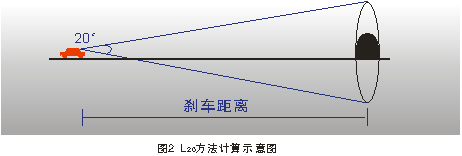With the development of the economy, our road network is constantly developing and crowded, so more tunnel structures are adopted, which play an important role in improving traffic flow and protecting the ground environment. In order to make better use of tunnels to increase traffic flow, reasonable tunnel lighting plays a crucial role. In this paper, the characteristics of the application of the electrodeless fluorescent lamp in tunnel illumination are discussed in combination with the characteristics of the electrodeless fluorescent lamp.
Introduction to tunnel lighting
The role of tunnel lighting is firstly to enable vehicles or pedestrians to safely enter, pass through and leave the tunnel area. On this basis, the vehicle is required to pass through the tunnel without slowing down the flow to ensure the smooth flow of the tunnel. When passing through the tunnel, the driver's instinct will have a sense of insecurity, so it will involuntarily reduce the speed, which will cause traffic congestion. In order to slow down or even eliminate this situation, we must use reasonable tunnel lighting to enable the driver to quickly adapt to the lighting environment and easily see the road surface, so that you can quickly see the possible obstacles on the road, so that the driver's sense of security is improved. The speed of the tunnel will not decrease. Another feature of tunnel lighting is that it is particularly bright during the day, mainly because the brightness of the tunnel inside and outside the tunnel is too different, and the night illumination can be weaker.
The CIE specifies that the light required in the tunnel is determined by the brightness of the light outside the tunnel and the location of the point in the tunnel (CIE 88-1990). There are five areas to consider when designing tunnel lighting (as shown in Figure 1):


1. Lead-in area
This is part of the road surface in front of the entrance to the tunnel. Strictly speaking, it is not part of the tunnel. In this area, the driver must be able to see the inside of the tunnel and possible obstacles so as not to reduce the speed. The driver's brightness adaptation in this area will determine the level of brightness required for the next area. The CIE calculation of this brightness adaptation method is the L20 method, which calculates the average brightness of the surrounding, sky and road surface within the 20° viewing angle centered on the driver's line of sight at the start of the entry zone (as shown in Figure 2). It is obvious that the brightness during the day is significantly higher than that of the night, so the tunnel lighting is more demanding during the day.


The braking distance in the above figure is the distance from the obstacle to the brake stop, usually related to the speed of the car. The specific data is shown in Table 1.


2. Threshold area
The length of this area is equal to the braking distance. At the beginning, the brightness requirement remains the same and is related to the external brightness L20 value and traffic conditions. The latter part can make the brightness drop rapidly, and by the end it can fall to 40% of the initial value.
3. Transition zone
The brightness of this area continues to decrease until it is the same as the inner section, but the ratio of brightness changes must not exceed 1:3, otherwise the human eye's ability to adapt to the environment is not enough. Of course, at the end of the transition, the brightness is three times the inner segment.
4. Internal area
This area is between the transition and the exit section and is usually the longest part of the tunnel. Its brightness level requirements are usually determined by vehicle speed and traffic conditions. Generally, the CIE design standards are shown in Table 2.

